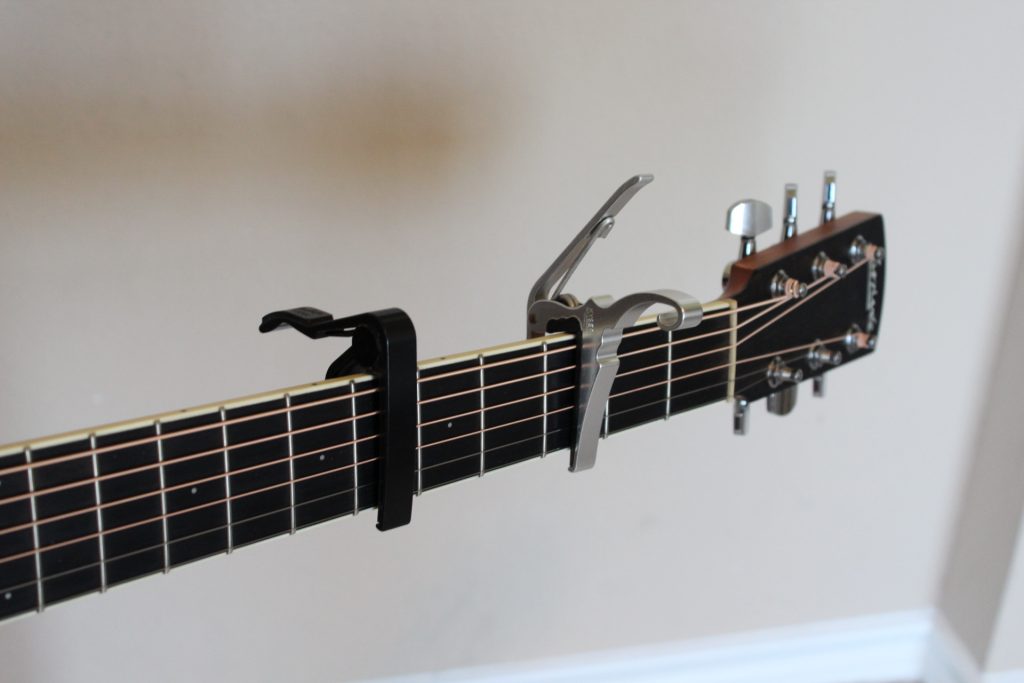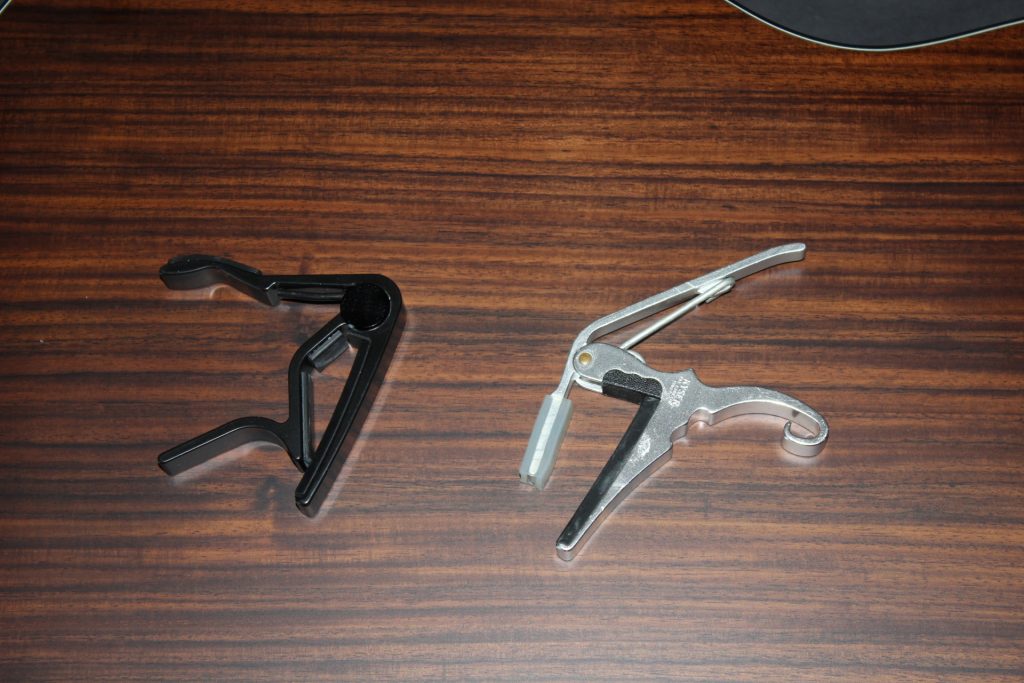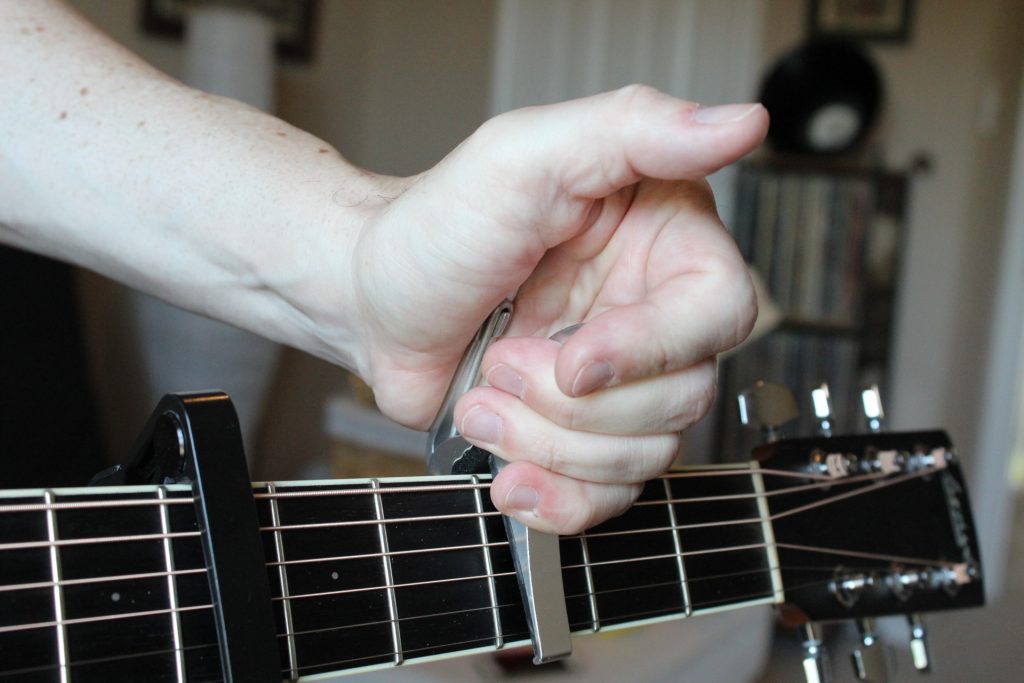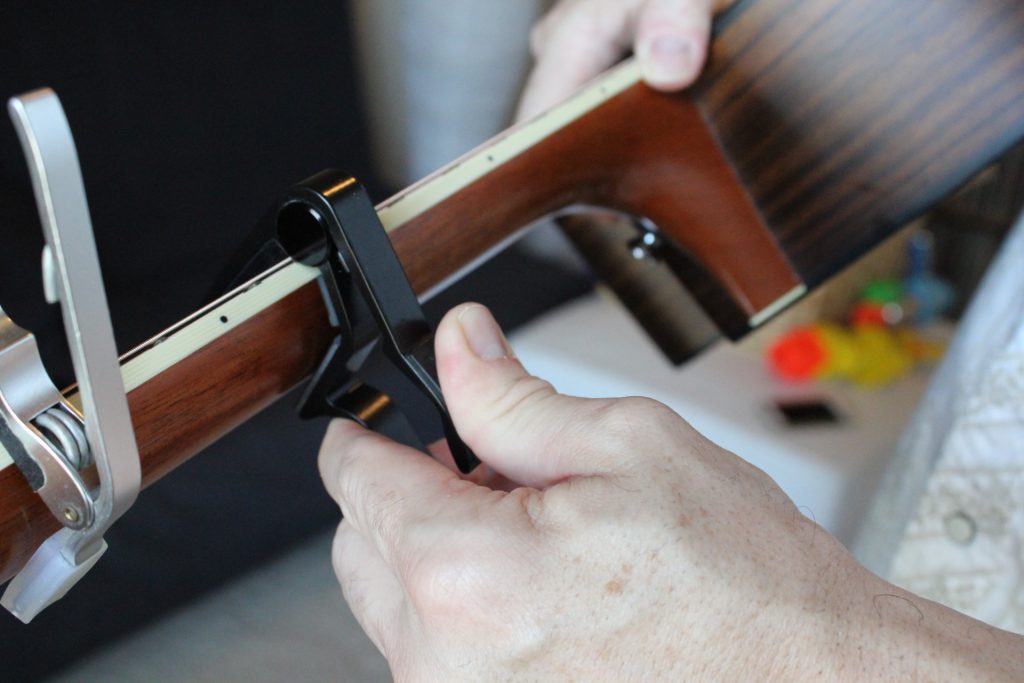2 Capos for Fingerstyle for Fast Changing
I’ve always been intimidated by capos… Well, I used to be intimidated by them. I tend to shy away from “complicated” things: alternate tunings, effects pedals, capos.

However, when you understand something, a lot of it’s power for fear is removed and it’s power of… power… is harnessed.
2 Fingerstyle Capos for Fast Changing
I’ll talk about the capos I use below so feel free to skip down.
Transposing
The basic use of a capo, for me, is just to transpose something. That means, to change the key without doing the mental gymnastics of figuring out the new chords.
If you played E-F-G chords (for some really eclectic reason) and wanted to raise it up, you could play chords of A-Bb-C (same relative steps between: half step and whole step respectively).
That might be easy to do with barre chords given the specific chords. It works for this example too.

So instead you could put a capo on the fifth fret. Now the same shape you would have played for E works for A. See the capo is acting like your finger in the barre chord for A.
Now play the same shapes as you would have for F and G, but now as Bb and C.
You just pretend the capo is the nut and everything else works out for transposing.
This can be really helpful if you are learning a song online. People will play it in various chords based on their voice. If you learn it in that chord, but want to then transpose it, a capo might be the solution.
When I was learning “Never Going Back Again” online, I watched a lot of videos. I was able to learn the song that way, but then wanted to play it along with Lindsey Buckingham. Well, more recent videos of him playing it are played in lower keys (presumably because his voice has aged and needs to be lower).
Quick-Change Capo
There’s a good variety of capos from pretty normal to semi-weird. The 2 types I have fall into the quick-change category. I really don’t have a ton of interest in doing any different (better?) than these capos and I’m not looking to make it a slower, harder process.
Capos
I use a few capos but they are all of two brands. I’m not saying these are the best – I haven’t tried them all. Actually, I’m open to other ones but these do work really well.
Kyser KG6B
The Kyser KG6B is a fairly typical capo. It’s quick and easy to change, holds the strings well and is pretty cheap. Not much in the way of bells and whistles, but it does the job.

Also, it’s made of high quality metal that has good attributes. I haven’t done this myself, but I’ve seen cases of others modifying these capos.
You can bend it a bit if you need and also you can notch it. So if you wanted to NOT affect a given string (or multiple), you could file it down into a custom shape.
I’m not looking to do that, but I keep it in mind in case I ever have any wild ideas.
Since the handle is basically at a 90 degree angle from the clamp for the strings, it tends to work best by rotating your guitar a little up (where the sound hole is pointing up). The next capo is similar… but different…
Dunlop 83CB
The thing I like about Dunlop 83CB capo (beside just “it doesn’t it’s job”) is the way it’s set. Instead of having to put my hand over the top of the neck and squeeze high up, it’s more like shaking hands or something.
The angle is also about 90 degrees, but in this case the clamp for the strings comes out on top of your hand. It’s still best to rotate the guitar a bit.

However, the part where you pinch it with your fingers only fits a couple of fingers. It can make it a little harder to squeeze. Mainly only if you’re not thinking and try to do it with more of your finger tips.
Also, the top/front of this capo – the part that sticks out from the fretboard – is lower. There are some cases where a chord form has my hand lean over the capo and this one has a lower profile.
Conclusion
No big secrets here from me. These capos are good, cheap and do their job. I’d recommend trying both and deciding which you prefer – maybe different style for different songs or hand strength.

Leave a Reply